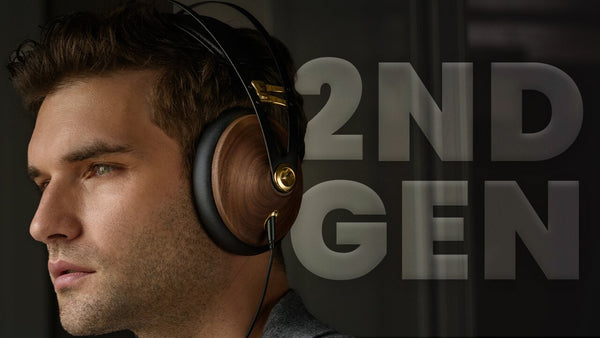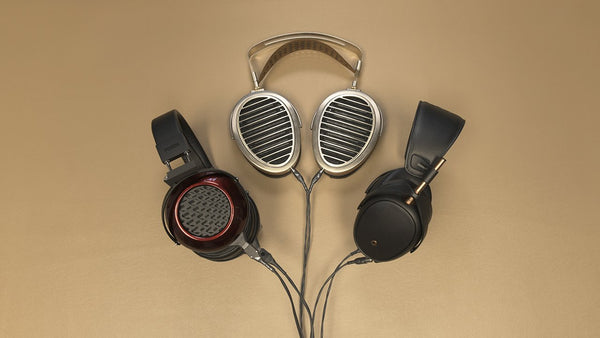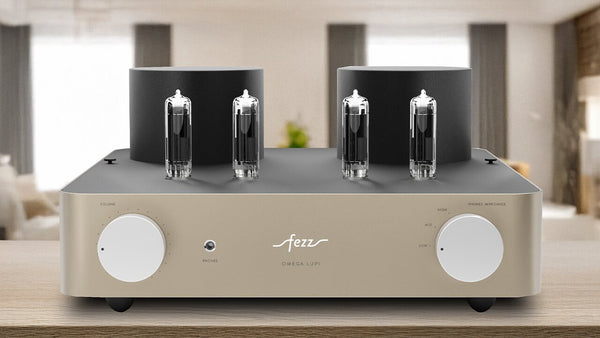Comfortable Over-Ear Headphones for Optimal Sound Quality

TL;DR: Comfortable over-ear headphones deliver both superior sound quality and all-day listening comfort. Choosing the right fit, adjustable headbands, and breathable materials can make a huge difference for longer sessions. Top audiophile models like the HIFIMAN HE1000se, Meze Audio Elite, and Focal Utopia 2022 balance incredible audio performance with ergonomic design.
- Over-ear headphones offer broader soundstages and better comfort compared to on-ear and in-ear styles.
- Key comfort features include adjustable headbands, memory-foam ear pads, and breathable materials.
- Look for headphones with even weight distribution to avoid head pressure and ear pain.
- Open-back designs enhance sound realism and comfort through better ventilation, but are best for quiet environments.
- Top recommended models for comfort and quality: HIFIMAN HE1000se, Meze Audio Elite, Focal Utopia 2022.
You can find consistent, high-quality sound with the right pair of over-ear headphones. Plenty of audiophiles enjoy the unique benefits that come with these headphones, like a broad soundstage and deep immersion into the music they love.
However, while sound quality is the most important factor for audiophile gear, it’s not the only one.
Comfort and fit are crucial to your listening experience, too. Even the very best headphones won’t get much use if you find them hurting your ears or the top of your head.
Don’t settle for basic models that make your ears hurt from headphones. With the right pair of cans, you can enjoy incredible sound quality along with a comfortable listening experience.
So, how can you choose over-ear headphones that don’t hurt and provide a consistently excellent listening experience?
Keep reading to learn about the benefits of over-ear headphones, with a focus on comfort and fit. Then, we’ll share tips for choosing and adjusting over-ear headphones as well as share troubleshooting tips for common over-ear headphone comfort issues.
Why Choose Over-Ear Headphones? Comfort and More
When it comes to fit and comfort, you can group most headphones into one of three categories:
- Earbuds and in-ear monitors (IEMs), which fit into the ear canal. Custom IEMs, molded to fit the unique contours of the owner’s ear canals, are an expensive but especially comfortable option.
- On-ear headphones, which sit on the outer ear when worn. On-ear headphones are popular, and many listeners find them to be comfortable. However, a significant portion of audiophiles and casual listeners find that this style leads to discomfort during longer listening sessions.
- Over-ear headphones, which sit on the sides of the head around the ears when worn. This style allows the headphones to distribute weight and pressure across a larger surface area. For listeners, that means more comfort and longer listening sessions.
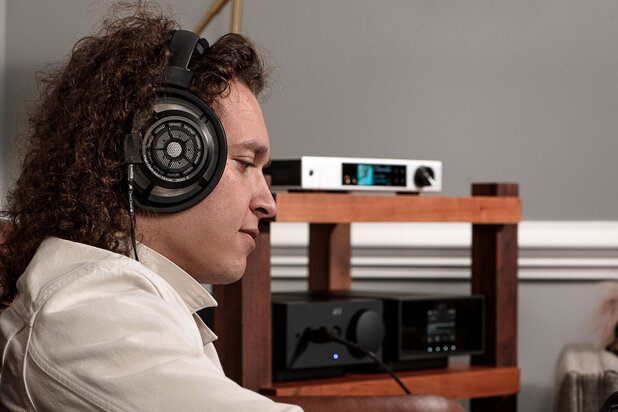
Not sure where you should start with audiophile headphones, or if on-ear or another style is best for you? Our in-depth guide to buying audiophile headphones will get you pointed in the right direction.
Our ears are sensitive structures, so it’s not too surprising to think that placing something in or on them could lead to discomfort or even pain during a longer listening session. That’s an issue over-ear headphones avoid through their basic design, something that’s shared across many manufacturers and models.
Over-ear headphones need to fit properly, of course. Not every model will work for every listener. But there are almost certainly several audiophile-grade, on-ear headphone options that will work for you, offering consistent comfort and a high-quality audio experience.
Need to make an adjustment to your over-ear headphones to increase comfort? We offer tips for getting the best fit out of over-ear headphones later on in this blog.
If you don’t want your ears to hurt from headphones, over-ear styles make sense. But comfort is just one of many reasons why plenty of audiophiles prefer an over-ear option. Why else should you consider over-ear headphones?
Soundstage and Audio Isolation
Over-ear headphones have a big advantage versus other headphone styles in terms of the soundstage listeners experience. Soundstage refers to the three-dimensional space perceived when listening to audio. In other words, the relative position of instruments and vocals on an imaginary stage, and the distance between them.
Because over-ear headphones encapsulate the ears, they can produce a broader, wider soundstage that makes music more immersive. For many audiophiles, that leads to a better listening experience – one that makes them feel more like they’re in the room where the music was performed.
The larger size of on-ear headphones as compared to other options also allows for larger headphone drivers, the component that creates the sound you hear.
While bigger doesn’t always mean better, larger drivers in audiophile-grade headphones can deliver richer bass, clearer middle frequencies, and more dynamic range (the difference between the softest and loudest sounds produced). Those benefits also support a richer and more immersive listening experience.
Additionally, over-ear headphones can deliver superior sound isolation with closed-back designs and active noise cancelling (ANC) technology in place. This is a great option for listening in open, public, and shared environments where you want to keep outside noise at bay.
Alternatively, over-ear cans with open-back designs can deliver an even broader and more immersive soundstage. However, open-back designs allow sound leakage into and out of headphones. So, they’re best used in quiet places and when not in close proximity to other people.
In terms of listening to audio safely, The Hearing Health Foundation points to over-ear headphones as the best option. Of course, all types of headphones offer a safe listening experience when used as directed. However, over-ear cans provide comfort and, in closed-back designs with ANC technology, a reduced need to raise the volume to harmful levels.
Many Ideal Use Cases
High-quality over-ear headphones deliver comfort and exceptional sound for casual listeners, audiophiles, gamers, remote workers, and many others who enjoy listening to audio while at work or at play.
There are plenty of options for over-ear headphones that don’t hurt (we highlight some top options later on, along with tips for getting the perfect fit). And you can find both open-back and closed-back styles that offer optimal performance in private, quiet spaces and busy, public environments, respectively.
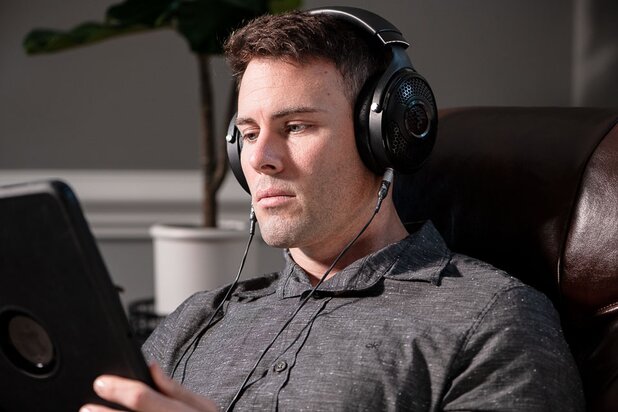

Choosing and Adjusting Over-Ear Headphones for Long-Term Comfort
Now that we know about the benefits of over-ear headphones in the big picture, let’s get a little more specific. Here’s our expert guidance on choosing over-ear headphones that don’t hurt your ears while still getting the depth, richness, and complexity of playback that this headphone style is known for.
The Right Fit: Size, Shape, and Design Matter
High-quality over-ear headphones are designed to be comfortable for most listeners, but they may need some adjustments for perfect placement.
Keep in mind that “over ear” means exactly that. Your headphones should comfortably fit over your ears and enclose them without pressing on them or applying pressure to them. If a given pair doesn’t fit over your ears and can’t be adjusted for a proper fit in this way, it’s best to look for another model.
That means earcup depth and diameter are crucial. So, check out the earcup depth and diameter for the cans you’re interested in and compare those measurements to your own ears. This is one of the easiest ways to avoid buying headphones that hurt your ear cartilage.
Remember that ventilation is an important part of comfort for long listening sessions, too. Open-back and closed-back headphones have their sonic advantages and disadvantages. In terms of comfort, some audiophiles lean toward open-back designs because they allow air to circulate in the ear cup. That means less heat and humidity inside the ear cups.
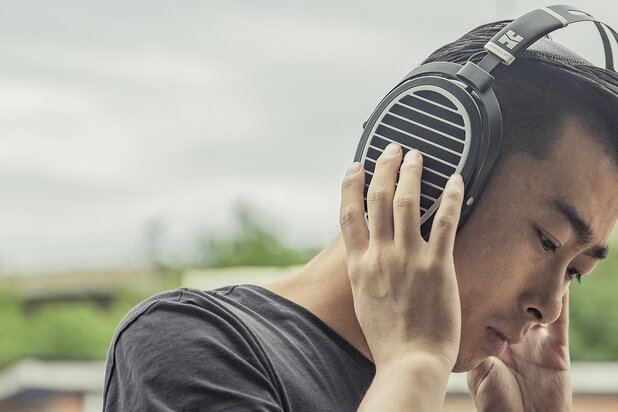
Headband Pressure and Weight Distribution
The headband is a crucial but sometimes-overlooked part of proper fit and comfort for headphones. A band that is too small or isn’t expanded to the right length can cause headphones to hurt the top of the head.
The good news is that annoyance can usually be avoided, and easily, by adjusting the headband. The band should be tight enough to help keep the earcups snugly over the ears, but loose enough to either rest gently on the crown of the head without applying pressure or, in some cases, not touch it at all.
Padded headbands offer a cushion that spreads out the force applied to the head, increasing comfort. Suspension-style headbands also distribute pressure across the entire head, reducing the chances of a sore or agitated crown even during long listening sessions.
If many types of headphones hurt the top of your head, consider lighter models and headbands with memory foam and other advanced cushioning. These options can offer enhanced comfort and still allow you to enjoy all the benefits of audiophile-grade over-ear headphones.
Adjusting Over-Ear Headphones for Comfort and Personalized Fit
Most audiophile-grade headphones allow you to adjust your headphones in a variety of ways for increased comfort. Headphonesty offers some general tips for finding a great and long-lasting fit with over-ear headphones.
Along with the tips we’ve already covered in this section, make sure you:
- Align the headphones with your ears. Your headphones should have markings that tell you which ear cup goes on your right ear and which goes on your left. Wearing headphones backward is a quick path to a poor fit and your ears hurting from headphones, but it’s an easy fix, too.
- Try out different positions and lengths with your headband to find a fit that works in the long term. A little experimenting now can lead to many hours of comfortable and immersive listening in the future.
- Aim for roughly equal force on both sides of the head for more balance and comfort. The exact adjustments will differ based on the specific model of headphones, but the manual and other guidance will explain what to do with your headphones specifically.
- Aim for a snug, but not tight, fit around the ears. Use the tilt and swivel features available on the ear cups of many high-quality headphones to make small adjustments until you’re satisfied.
Solving Common Comfort Issues: Tips, Tricks, Customization & Our Picks for Comfortable Over-Ear Headphones
Why Do My Ears Hurt from Headphones? Answers and Solutions
Wondering what’s making your ears or head hurt when you wear your headphones? Here are a few common causes of discomfort and ways to solve those problems:
- Pressure and pain in your cartilage, especially around the edge of the ear, is often caused by too-small earcups and shallow earpads. You may be able to tilt and swivel the earcups to alleviate the pain. You may also need to buy a new set of headphones that better fit your ears.
- Ear pain and head pain around the earcups can also be caused by excessive clamping force from the headband. Try extending or lengthening the headband so it fits snugly, but not tightly or painfully.
How to Find Headphones That Don’t Hurt Your Ears
To find over-ear headphones that don’t hurt your ears, choose models that:
- Fit your ears, based on the circumference and depth of the ear cups.
- Have a lower clamp pressure, or one that easily allows you to adjust the headband to reduce clamp pressure.
- Offer memory foam and other advanced padding in the ear cups.
- Highlight their suitability in terms of comfort in general and for long listening sessions. Check out both product descriptions and user reviews to learn more.
- Have breathable materials and a breathable design, which are often but not always open-back headphones.
Solving the “Headphones Hurt Top of Head” Problem
Look for headphones that have good padding in the headband or a suspension headband. Both options help to spread out the force and pressure over a larger area, protecting the crown of your head.
Also, make sure you try adjusting your headphones by extending the headband and even rotating and tilting the ear cups. A few minutes of work now can pay off with comfortable listening for years to come.
Customizing for a Perfect Fit
Love the immersive listening experience your headphones offer, but aren’t quite happy with their level of comfort? Consider custom or aftermarket earpads. Velour, leather, and hybrid pads all have their unique advantages. Even a pad swap for the same material but a different shape can make a big difference by better fitting your ears.
Our Top Picks for Comfortable Over-Ear Headphones
At Moon Audio, comfort is a key consideration for every pair of headphones we choose to offer. However, the following three models are standouts in terms of delivering a comfortable listening experience without sacrificing sound quality.
HIFIMAN HE1000se Headphones
The HE1000se Headphones feature an open-back design that delivers an incredibly expansive soundstage along with a deeper sense of realism and presence in audio. Regarded as the best headphones for their price point, these cans also offer a stable, durable headband, deep and comfortable ear pads, oval ear cups, and a high-quality all-around build.
Meze Audio Elite Headphones
Ultra-low distortion, ultra-high-resolution audio, and thorough emphasis on ergonomics come together in the open-back Elite Headphones.
The entire headphone chassis is fully serviceable and replaceable, making it easy to swap in custom or new ear pads and keep these headphones going for many years to come. The stock soft ear pads and overall lightweight construction mean these cans are designed for comfortable, long-term listening sessions.
Focal Utopia 2022 Headphones
Clarity, resolution, and realism come together with warmth and musicality in the incredible open-back Utopia 2022 Headphones. Reference-quality listening is even better with an adjustable headphone design that accommodates all head shapes and sizes. Lightweight and offering even weight distribution, they feature a lambskin leather headband and perforated memory-foam ear pads.
Audiophile-Grade Headphones That Don’t Hurt Your Ears from Moon Audio
Say hello to all-day listening comfort with headphones from Moon Audio. Enhance the listening experience without compromising comfort. Explore our selection now!










